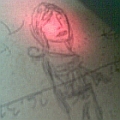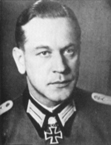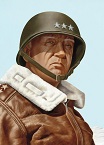MakeeLearn
Posts: 4278
Joined: 9/11/2016
Status: offline

|
TENDERS and SUPPORT/AUXILLARY SHIP GUIDE
Special credit to and inspired by wwengr.
Includes citations to source (except recommended uses).
Tenders Can Assist Pierside Repairs
If any Tenders capable of providing repair services are present in port and no vessels are assigned to Repair Ship repair mode, the Tenders can contribute to Pierside repairs [14.2.3.7].
Tenders Can Refuel Ships it can Rearm
If a Tender can rearm a ship, it can refuel it assuming it meets all other requirements (e.g., has fuel, sufficient Ops points) [forum – don bowen].
Tenders Must Be Disbanded/Anchored To Reload Weapons
Ports that are normally too small to rearm certain weapons may do so if an appropriate tender
is anchored in the Port [20.1.2.2] (includes bases with a Port Size 0).
Tender Cargo Capacity May Preclude the Tender from Rearming Weapons
A Tender can only load weapons that have a weapon Rearm Cost [listed in 20.1.2.2] that is less than or equal to the Tender’s Cargo Capacity [20.1.2.2]. For example, the Platypus Class AS (Australian) (1,200 Cargo Capacity) cannot rearm the 21” Mk 14 torpedoes (1290 Rearm Cost) used by a majority of U.S subs.
Tenders Expend Onboard Supply to Rearm and Repair
As a TF rearms, it consumes supplies [20.1.2.2]. Supplies are also expended for repairs [15.0]. Therefore, a Tender must have supply onboard to rearm and repair. As Tenders operate, their supplies will decrease, so you need to periodically put them in a TF and load supplies onto them.
Tenders and TF Type
When not performing operations while at anchor/disbanded in a port, Tenders are often placed in Support TF missions [6.1.1.1].
Tender Ship Repair Points
Undamaged Tenders that are also Repair Ships (e.g., AS, AD) who have all their Ops points may contribute, up to a maximum of 83 Repair Points per turn (therefore, Repair Ships may repair up to a maximum of 0.83 damage points per turn) [14.2.3.2.1.1].
Tender Weapon Repairs
Weapon Repair points are generated independently of a Repair Ship Tender’s ability to repair other forms of damage [see 14.2.4 for details]. However, a Tender can only repair weapons on the types of ships it can repair ship damage [14.2.4.2].
Repair Ships
AR, ARD, AS, AD, AGP, and AG ships have the ability to repair other ships – these ships are collectively “Repair Ships” [14.2.3.2]. Each type of Repair Ship is limited in the type of ship and damage it can repair [14.2.3.2]. If a Repair Ship is available to assist with a ship’s repair (i.e., the Repair Ship is in port, capable of repairing the damaged ship, capable of repairing the type of damage, and not busy with other repairs), the “Repair Ship” option will be selectable when the “Repair Mode” is clicked for the ship you want to repair [14.2.2.1]. Repair Ships cannot repair if they are in a TF docked at a port [14.2.2.2]. An undamaged Repair Ship that does nothing else in a will generate 1000 non-cumulative Ops points in that turn [14.2.3.2.1]. Undamaged, “fresh” Repair Ships may contribute, up to a maximum of 83 Repair Points per turn [14.2.3.2.1.1]. Therefore, Repair Ships may repair up to a maximum of 0.83 damage points per turn [14.2.3.2.1.1]. Repair Ships may also repair on a High-Priority basis [14.2.3.2.1.3]. In this case, a Repair Ship’s entire aggregate of Ops points is used and may repair up to a maximum of 1.4 damage points per turn, with a consequent total Ops point penalty [14.2.3.2.1.3]. Repair Ships can assist damaged ships that use either Readiness Repair mode [14.2.2.1] or Pierside Repair mode [14.2.3.3].
Note: You are often better off repairing System Damage using Pierside repair mode, then using a Repair Ship mode to repair the remaining damage [forum].
Note: You cannot assign a specific damaged ship to a specific Repair Ship [forum].
Note: If a damaged ship is using “Repair Ship” mode (e.g., a DD) and the only Repair Ships for that damaged ship (e.g., AD and AR) become unavailable (e.g., you put the AD and AR into a TF and move them away from the port hex), the damaged ship is automatically changed to Pierside repair mode [forum].
Note: Steps to use the Repair Ship option for a Repair Ship that is capable of repairing the damaged ship and the type of damage: 1) disband the Repair Ship in a port; 2) disband the ship to be repaired in the same port; 3) stand down the ship to be repaired; 4) click “Pierside” to get the “Repair Ship” option [forum].
Note: Supplies are expended for repairs [15.0]. Therefore, a Repair Ship must have supply onboard to conduct repairs. As Repair Ships operate, their supplies will decrease, so you need to periodically put them in a TF and load supplies onto them.
Note: [forum strategy post by don bowen 6/2010] “Repair ships can aid in pierside repairs but a ship assigned to repair ship uses only the repair ship function. If you want the best overall repair, do not use the repair ship repair option. Let the Repair module decide how to allocate them. If you want a specific ship to get extra attention, use the repair ship option for it and let the remainding ships use port facilities. This is especially true for floating drydocks. If you only have one ship, use pierside - it optimizes all port/repairship resources. Repair ships are best used at smaller ports that lack the functions provided by a repair ship (or floating drydock). Also at a larger port when you have lots of activity and the port can get overloaded with repairs.”
AS – Submarine Tender
Repairs subs, but cannot repair major damage except midget sub major engine damage [14.2.3.2 and 14.2.1.4].
Rearm subs, including torpedoes [20.1.2.2].
Can rearm subs at any size port, including zero [20.1.2.2], but cannot rearm while underway.
Use #1 – Anchor at a forward operating base to service subs to extend the range of sub operations.
Use #2 – Anchor at a repair base to speed sub Pierside repairs or enable subs to repair using Repair Ship mode to reserve Pierside repairs for other ships.
Use #3 – Low detection minelaying (Sub Mine Laying Mission)[6.1.1.1].
Low priority use: low detection transports ( [6.1.1.1].
AD – Destroyer Tender
Repairs and Rearms DD, Small Escort, and Small Craft type ships, but can only repair Major damage for Small Craft type ships [14.2.3.2]. “Small Escort” type ships = DE, APD, DMS, DM, AVD, E, TB, KV, PF, PB, PC, SC, AM, and ML [14.2.3.2]. “Small Craft” type ships = PB, PC, SC, AM, ML, HDML, MGB, YP, YMS, and AMc [14.2.3.2].
Use #1 – Combine with other support ships and tenders to enhance repair and rearming capabilities at forward and small bases.
Use #2 – Anchor at forward bases to repair and rearm Destroyers.
Use #3 – Anchor at a repair base to speed Pierside repairs, repair ships at anchor, and speed up the repair of damage caused by Upgrades and Conversions.
Low priority uses: transport.
AV – Aircraft Tender
Provides Aviation Support points to bases for operating Float Planes (FP) and flying boats (an amphibious type of PA – patrol aircraft)[20.1.2] and some AVs can operate planes while underway (see notes below).
Use #1 – Provide Seaplane Support for FPs and float PAs operating at remote bases.
Use #2 – Provide Seaplane Support for FPs and float PAs operating at a base that would otherwise exceed the base’s available aviation support capacity.
Use #3 – Operate FPs and float PAs while underway at remote locations (AV must have an “Air Capacity” value to operate while underway – see notes below).
Use #4 – Transport FPs and float PAs (Aircraft Transport TF missions).
Low priority use: cargo missions.
Note: If an AV has an “Air Capacity” value, then the AV can operate planes while underway [7.0.1.1.1]. For example, the U.S. Curtiss Class AV has a 0 Air Capacity, but the U.S. Wright Class AV has a 4 Air Capacity; thus, the Wright Class AV can operate planes while underway and the Curtis Class AV cannot.
Note: An AV’s “Seaplane Support” value is listed on the right side of Ship Information Screen.
Note: The plus number next to a base’s Aviation Support value is base’s Seaplane Support value (e.g., points from a disbanded AV located in the base’s port).
Note: An AV’s “Air Capacity/Used” value and the number of “Sorties, Max/Remaining” are listed on the right side of Ship Information Screen.
Note: AVs, including those with an Air Capacity value of 0, can provide Aviation Support for FPs, FFs, and float PAs at any friendly airfield, including those that are size 0 (referred to as “dot” hexes) as long as they are on a coastal hex [7.0.1.1.1].
Note: [michaelm on 7/7/2011] Next build (1108p3) will have changes for when/how seaplanes draw supplies (http://www.matrixgames.com/forums/tm.asp?m=2852726&mpage=1&key=�).
AVD – Aircraft Tender, Destroyer
Destroyer modified to provide Aviation Support points to bases for operating Float Planes (FP) and flying boats (an amphibious type of PA – patrol aircraft)[20.1.2]. AVDs retain their ASW capabilities [20.1.2]. AVDs do not have “Air Capacity” values above 0 and therefore cannot operate planes while underway.
Use #1 – Provide Seaplane Support for FPs and float PAs operating at remote bases (can better defend itself than AV ships).
Use #2 – Provide Seaplane Support for FPs and float PAs operating at a base that would otherwise exceed the base’s available aviation support capacity.
Use #4 – Transport FPs and float PAs (Aircraft Transport TF missions).
Low priority uses: missions a DD is capable of performing (unlike DDs, AVDs cannot participate in an Air Combat TF, Replenishment TF, Mine Laying TF, or Mine Sweeping TF [20.1.2.1].
Note: An AVD’s “Seaplane Support” value is listed on the right side of Ship Information Screen.
Note: The plus number next to a base’s Aviation Support value is base’s Seaplane Support value (e.g., points from a disbanded AV located in the base’s port).
Note: AVDs can provide Aviation Support for FPs, FFs, and float PAs at any friendly airfield, including those that are size 0 (referred to as “dot” hexes) as long as they are on a coastal hex [7.0.1.1.1].
Note: [michaelm on 7/7/2011] Next build (1108p3) will have changes for when/how seaplanes draw supplies (http://www.matrixgames.com/forums/tm.asp?m=2852726&mpage=1&key=�).
AVP – Aircraft Tender, Patrol
Provides Aviation Support points to bases for operating Float Planes (FP) and flying boats (an amphibious type of PA – patrol aircraft)[20.1.2] and one class of Dutch AVPs can operate planes while underway (see notes below).
Use #1 – Provide Seaplane Support for FPs and float PAs operating at remote bases.
Use #2 – Provide Seaplane Support for FPs and float PAs operating at a base that would otherwise exceed the base’s available aviation support capacity.
Use #3 – Transport FPs and float PAs (Aircraft Transport TF missions).
Low priority use: cargo missions.
Note: If an AVP has an “Air Capacity” value, then the AVP can operate planes while underway [7.0.1.1.1]. For example, the Dutch Arend Class AVP has an Air Capacity value of 1, but the Dutch Poolster Class AVP has a 0 Air Capacity; thus, the Arend Class AVP can operate 1 plane while underway and the Poolster Class AVP cannot.
Note: An AVP’s “Seaplane Support” value is listed on the right side of Ship Information Screen.
Note: The plus number next to a base’s Aviation Support value is base’s Seaplane Support value (e.g., points from a disbanded AV located in the base’s port).
Note: An AVP’s “Air Capacity/Used” value and the number of “Sorties, Max/Remaining” are listed on the right side of Ship Information Screen.
Note: AVPs, including those with an Air Capacity value of 0, can provide Aviation Support for FPs, FFs, and float PAs at any friendly airfield, including those that are size 0 (referred to as “dot” hexes) as long as they are on a coastal hex [7.0.1.1.1].
Note: [michaelm on 7/7/2011] Next build (1108p3) will have changes for when/how seaplanes draw supplies (http://www.matrixgames.com/forums/tm.asp?m=2852726&mpage=1&key=�).
AR – Auxiliary Repair Ship
Repairs all ship types [14.2.3.2]. ARs can repair Major Engine damage of 5 points or less and Major Flotation damage of 5 points or less on any ship. [14.2.1.4]. ARs, however, can repair all Major Damage on small craft [14.2.3.2]. “Small Craft” type ships = PB, PC, SC, AM, ML, HDML, MGB, YP, YMS, and AMc [14.2.3.2].
Use #1 – Augment repair services at forward ports and the capability to repair some types and amounts of Major Damage at ports below the size of 7.
Use #2 – Augment repair services provided by ports size 7 and larger.
Use #3 –Augment shipyard repair services.
Note: Do not confuse “Repair Ship” with “Auxiliary Repair Ship” (AR). All ARs are Repair Ships, but not all Repair Ships are ARs (e.g., other “Repair Ships” are ARD, AS, AD, AGP, and AG).
ARD – Auxiliary Repair Dock
Assists the repair of any ship type, but only floatation damage, including Major floatation damage [14.2.3.2]. An ARD is a floating drydock used to repair damage below the waterline [20.1.2]. Although ARDs can only repair hull (flotation) damage, they do it much better than any other type of Tender or Repair Ship [20.1.2].
Use #1 – Stabilize flotation damaged ships before sending ships to repair yards.
Use #2 – Enable ports of size 6 and below the capability to repair Major Flotation Damage.
Use #3 – Augment repair services provided by ports size 7 and larger and enables the repair of Major Floatation Damage over five points.
Use #4 –Augment shipyard repair services.
Note: ARDs are very efficient at floatation repair, but are limited to hosting a single ship per cycle [14.2.3.2.1.2].
Note: An undamaged, “fresh” ARD may contribute, up to a maximum of, 100 Repair Points per turn [14.2.3.2.1.2]. An ARD may repair, therefore, up to a maximum of 1 floatation damage point per turn on a single ship.
Note: The “Shift Lift Capacity” value on the right side of the ARD’s Ship Information Screen is the maximum damaged ship tonnage that the ARD can repair.
Note: [As of 9/29/11] Public beta pitch change #049 is “Fixed ARD repair”. Not clear what this is but it may be that with the beta patch installed ARDs do not have to have a disbanded AR, AS or AD in port to function.
AGP – Torpedo Boat Tender
Repair major and minor damage on Small Craft (i.e., PT, PB, PC, SC, AM, ML, HDML, MGB, YP, YMS, and AMc) [14.2.3.2]. Rearms all weapons on Small Craft, including torpedoes for (i.e., PT, PB, PC, SC, AM, ML, HDML, MGB, YP, YMS, and AMc) [20.1.2 and 14.2.3.2].
Use #1 – Anchor with other support ships and tenders to enhance Small Craft repair and rearming capabilities at forward and small bases.
Use #2 – Anchor at forward bases to repair and rearm Small Craft.
Use #3 – Anchor at a repair base to provide Repair Ship service for one damaged Small Craft or assist Small Craft Pierside repairs and speed up the repair of damage to Small Craft caused by Upgrades and Conversions.
Low priority uses: transport troops.
AG – Miscellaneous Auxiliary
A general purpose auxiliary with several uses [20.1.2]. Repairs Small Escort (DE, APD, DMS, DM, AVD, E, TB, KV, PF, PB, PC, SC, AM, and ML) and Small Craft (i.e., PT, PB, PC, SC, AM, ML, HDML, MGB, YP, YMS, and AMc) [14.2.3.2]. Repairs Major damage on Small Craft [14.2.3.2]. Rearms Small Escorts and Small Craft [20.1.2.2], however, cannot rearm torpedoes or Guns larger than 5in/38 [20.1.2].
Use #1 – Anchor with other support ships and tenders to enhance Small Escort and Small Craft repairs and rearming capabilities at forward and small bases.
Use #2 – Anchor at forward bases to repair and rearm Small Escorts and Small Craft.
Use #3 – Anchor at a repair base to provide Repair Ship service for one damaged Small Craft or assist Small Craft Pierside repairs and speed up the repair of damage to Small Craft caused by Upgrades and Conversions.
Low priority uses: cargo and troop transport.
AO – Oiler
Refuels ships while underway (e.g., as part of a Replenishment TF) and transport liquid cargo [20.1.2].
Use #1 – Refuel TFs while underway (order to meet TF or just follow TF).
Use #2 – Provide fuel to ships in the same hex at a forward/small port.
Use #3 – Transport fuel or oil.
Low priority use: Transport cargo.
AE – Ammunition Ship
Rearms ships while underway, however, underway rearming is only available in 1945 – until then AEs function as AKE.
Use #1 – Provide underway rearming (1945).
Use #2: Provide rearming at base with small port, including bases with a port size 0.
Low priority uses: transport cargo.
Note: Rearming consumes supplies [20.1.2.2]. Therefore, an AE must have supply onboard to rearm ships.
Note: If you want to rearm from an AE in port, disband (i.e., anchor) an AE in port with supply cargo and then select “Replenish at Sea” on the TF you want to rearm [forum Don Bowen 11/18/2009].
Note: If an AE with supply cargo is disbanded in a port and a rearming TF selects “Replenish from Port”, the rearming TF will only draw on the AE’s supplies if the port does not have sufficient supplies to complete the rearming [forum Don Bowen 11/18/2009].
Note: AEs cannot rearm mines or 46cm/45 T94, and can only rearm weapons with a Weapon Rearm Cost less than or equal to the AE’s cargo capacity [20.1.2.2]. For example, the US AE Pyro Class ships have a cargo capacity of 3600 and therefore cannot arm weapons larger than 14in/45 Mk VII [20.1.2.2].
Note: AEs cannot enhance or augment a port’s capability to rearm weapons [forum Don Bowen 4/28/2010].
Note: AEs can rearm at a base and do not require a port (e.g., a friendly colored dot base with a port size of 0) [forum Don Bowen 9/6/2009].
Note: AEs can rearm carrier sorties, including carrier torpedo sorties [20.1.2.2].
AKE – Ammunition Transport
Rearms ships when in both ships are anchored.
Use #1: Provide rearming at base with small port, including bases with a port size 0.
Low priority uses: transport cargo.
Note: Rearming consumes supplies [20.1.2.2]. Therefore, an AKE must have supply onboard to rearm ships.
Note: If you want to rearm from an AKE in port, disband (i.e., anchor) an AKE in port with supply cargo and then select “Replenish at Sea” on the TF you want to rearm [forum Don Bowen 11/18/2009].
Note: If an AKE with supply cargo is disbanded in a port and a rearming TF selects “Replenish from Port”, the rearming TF will only draw on the AKE’s supplies if the port does not have sufficient supplies to complete the rearming [forum Don Bowen 11/18/2009].
Note: AKEs cannot rearm mines or 46cm/45 T94, and can only rearm weapons with a Weapon Rearm Cost less than or equal to the AE’s cargo capacity [20.1.2.2]. For example, the US AE Regulus Class ships have a cargo capacity of 2560 and therefore cannot arm weapons larger than 12in/50 Mk 7 [20.1.2.2].
Note: AKEs cannot enhance or augment a port’s capability to rearm weapons [forum Don Bowen 4/28/2010].
Note: AKEs can rearm at a base and do not require a port (e.g., a friendly colored dot base with a port size of 0) [forum Don Bowen 9/6/2009].
Note: AKEs can rearm carrier sorties, including carrier torpedo sorties [20.1.2.2].
APD – Destroyer Transport
Destroyer modified for transporting troops and light equipment [20.1.2].
Use #1 – Fast transport of units that do not have large equipment (w/AVDs).
Use #2 – ASW.
Note: APDs do not have an “Amphibious Unload Bonus” capacity [6.3.1.1].
ACM – Minefield tenders
Minefield Tenders are a special class of ships that reduce the decay rate of minefields at bases [6.6.1.2.2]. The number of mines in a minefield in deep water decays by 33% per day, in shallow water by 5% per day, and in friendly bases with at least a size 1 port by 1% per day [6.6.1.2.1].
Use #1: Reduce defensive minefield decay by disbanding at base.
Use #2: Lay mines (use in Mine Laying TF).
Note: Each ACM can protect (i.e. service and repair) 150 mines from decay [6.6.1.2.2].
Note: Multiple ACMs may be stacked in a base to protect more mines [6.6.1.2.2].
Note: ACMs must be disbanded into a base to protect mines there – ACMs will not protect mines while in a task force at the base [6.6.1.2.2].
Note: When disbanded, ACM are maintaining the current mines and therefore, you do not need to have mines in your device pool or loaded on the ACM [forum Don Bowen, 8/28/2010 and 9/29/2010].
Note: In order for ACMs to work: 1. The port must have fuel. ACM consume fuel in routine mine maintenance and stop maintaining when there is no fuel; and 2. The ACM must be in good shape - if their damage gets above 10% or so, they stand down for maintenance [forum Don Bowen, 8/28/2010 and 9/29/2010].
AKV – Aircraft Transport
Transports air groups [20.1.2]. Air Groups loaded onto an AKV are not disabled on load, and will arrive at their destination in the same condition as when loaded [6.3.2.1 and 20.1.2].
Use #1 – Transport air groups that have short ranges (as Air Transport TF).
Note that the ship must be docked to load airframes.
Low priority uses: Transport troops and/or cargo.
Note: Air groups may never be fragmented on load [6.3.3.1.1].
Note: Each air group has a load cost based on the type of the aircraft (Fighter, Bomber, etc) and the number currently in the group [6.3.2.1].
Note: Aircraft loaded on an AKV are listed as “disabled” [non-authoritative forum post].
Note: Air Transport TFs need to be docked to load an air group [non-authoritative forum post].
Note: Restricted command air groups cannot be loaded on AKVs [non-authoritative forum post].
AMc – Coastal Minesweeper
Small minesweeper that allows you to sweep mines [20.1.2].
Use #1: Minesweeping in a Local Minesweeping TF.
Note: AMc cannot be placed in a Minesweeping TF [20.1.2.1].
Note: A Local Minesweeping TF only sweeps 1 hex (its destination hex) [6.6.2.1.2].
|
 Printable Version
Printable Version








 , thanks for the patience.
, thanks for the patience.  ?) of having an outdated hardcopy?
?) of having an outdated hardcopy?






 . Do I need to rejoin this units before I force them onto a transport(e.g. the canadians). Or it does not really matter and I can ship of the part of a unit anyway?
. Do I need to rejoin this units before I force them onto a transport(e.g. the canadians). Or it does not really matter and I can ship of the part of a unit anyway?  New Messages
New Messages No New Messages
No New Messages Hot Topic w/ New Messages
Hot Topic w/ New Messages Hot Topic w/o New Messages
Hot Topic w/o New Messages Locked w/ New Messages
Locked w/ New Messages Locked w/o New Messages
Locked w/o New Messages Post New Thread
Post New Thread